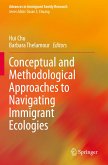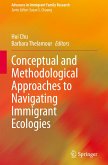In recent years, the role of diversity has become increasingly important and present - both in society and at the workplace. Diversity, that is any attribute that people might use do distinguish between self and others, is a topic that is visible in several areas and that has challenging implications, both for organizations and for society as a whole. It is a multilevel construct that needs a holistic approach - but so far, most of the research on diversity is limited to the team level, without reflecting on implications for other levels and interactions with other levels of diversity. The first objective of this dissertation is to examine whether approaches of organizational diversity research, namely faultlines, are applicable to the societal level and whether they are useful on this level to explain phenomena of societal relevance. Second, we investigate whether diversity trainings on the team-level can help meet these challenges by teaching useful competencies. And third, we explore whether characteristics on the individual level, namely intrapersonal diversity, enable people to overcome the challenges of diversity which will ultimately also contribute to meet the challenges of diversity on the societal level. On the basis of the combination of findings on diversity at three different levels and the introduced multi-level model, new hypotheses at different levels of analyses can be formulated and subsequently tested.
Bitte wählen Sie Ihr Anliegen aus.
Rechnungen
Retourenschein anfordern
Bestellstatus
Storno








